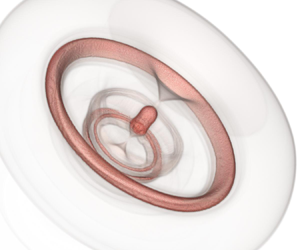Crossref Citations
This article has been cited by the following publications. This list is generated based on data provided by
Crossref.
Mi, XiaoCheng
Michael, Louisa
Nikiforakis, Nikolaos
and
Higgins, Andrew J.
2020.
Effect of spatial distribution of mesoscale heterogeneities on the shock-to-detonation transition in liquid nitromethane.
Combustion and Flame,
Vol. 222,
Issue. ,
p.
392.
Goncalves da Silva, Eric
and
Parnaudeau, Philippe
2021.
Numerical study of pressure loads generated by a shock-induced bubble collapse.
Physics of Fluids,
Vol. 33,
Issue. 11,
Bempedelis, N.
Zhou, J.
Andersson, M.
and
Ventikos, Y.
2021.
Numerical and experimental investigation into the dynamics of a bubble-free-surface system.
Physical Review Fluids,
Vol. 6,
Issue. 1,
Okita, Kohei
Miyamoto, Yuusuke
Furukawa, Teruyuki
and
Takagi, Shu
2022.
Numerical study on stress in a solid wall caused by the collapse of a cavitation bubble cloud in hydraulic fluid.
International Journal of Multiphase Flow,
Vol. 150,
Issue. ,
p.
103965.
Wu, Wangxia
Wang, Bing
and
Liu, Qingquan
2022.
Tandem cavity collapse in a high-speed droplet impinging on a constrained wall.
Journal of Fluid Mechanics,
Vol. 932,
Issue. ,
Bempedelis, Nikolaos
and
Ventikos, Yiannis
2022.
A sharp-interface model for grid-resolved cavitating flows.
International Journal of Multiphase Flow,
Vol. 149,
Issue. ,
p.
103968.
Bian, Zhendong
Wang, Jingzhu
Yin, Bo
Wang, Yongjiu
Qiu, Rundi
Wang, Yiwei
and
Du, Tezhuan
2022.
Studies on two-bubble energy transfer model with radiant-receiver structure.
Acta Mechanica Sinica,
Vol. 38,
Issue. 11,
Reuter, Fabian
Deiter, Carsten
and
Ohl, Claus-Dieter
2022.
Cavitation erosion by shockwave self-focusing of a single bubble.
Ultrasonics Sonochemistry,
Vol. 90,
Issue. ,
p.
106131.
Hoppe, Nils
Winter, Josef M.
Adami, Stefan
and
Adams, Nikolaus A.
2022.
ALPACA - a level-set based sharp-interface multiresolution solver for conservation laws.
Computer Physics Communications,
Vol. 272,
Issue. ,
p.
108246.
Yang, Xiaobin
Liu, Cheng
Li, Jingqi
Zhao, Min
and
Hu, Changhong
2023.
Implosion of a bubble pair near a solid surface.
Physical Review Fluids,
Vol. 8,
Issue. 2,
Tsoutsanis, Panagiotis
Pavan Kumar, Machavolu Sai Santosh
and
Farmakis, Pericles S.
2023.
A relaxed a posteriori MOOD algorithm for multicomponent compressible flows using high-order finite-volume methods on unstructured meshes.
Applied Mathematics and Computation,
Vol. 437,
Issue. ,
p.
127544.
Fan, Yuzhe
Bußmann, Alexander
Reuter, Fabian
Bao, Hengzhu
Adami, Stefan
Gordillo, José M.
Adams, Nikolaus
and
Ohl, Claus-Dieter
2024.
Amplification of Supersonic Microjets by Resonant Inertial Cavitation-Bubble Pair.
Physical Review Letters,
Vol. 132,
Issue. 10,
Maltsev, Vadim
Skote, Martin
and
Tsoutsanis, Panagiotis
2024.
High-order hybrid DG-FV framework for compressible multi-fluid problems on unstructured meshes.
Journal of Computational Physics,
Vol. 502,
Issue. ,
p.
112819.
Guo, Xu-Dong
Wang, Shu-Na
Liu, Nian-Nian
Wu, Cheng-Long
Sun, Peng-Nan
and
Peng, Yu-Xiang
2024.
Experimental investigation on the interaction of spark-generated array bubbles near a rigid wall.
Physics of Fluids,
Vol. 36,
Issue. 4,
Minin, Igor V.
and
Minin, Oleg V.
2024.
The breakup of gas bubbles by a shock wave: brief historical background.
The European Physical Journal H,
Vol. 49,
Issue. 1,





